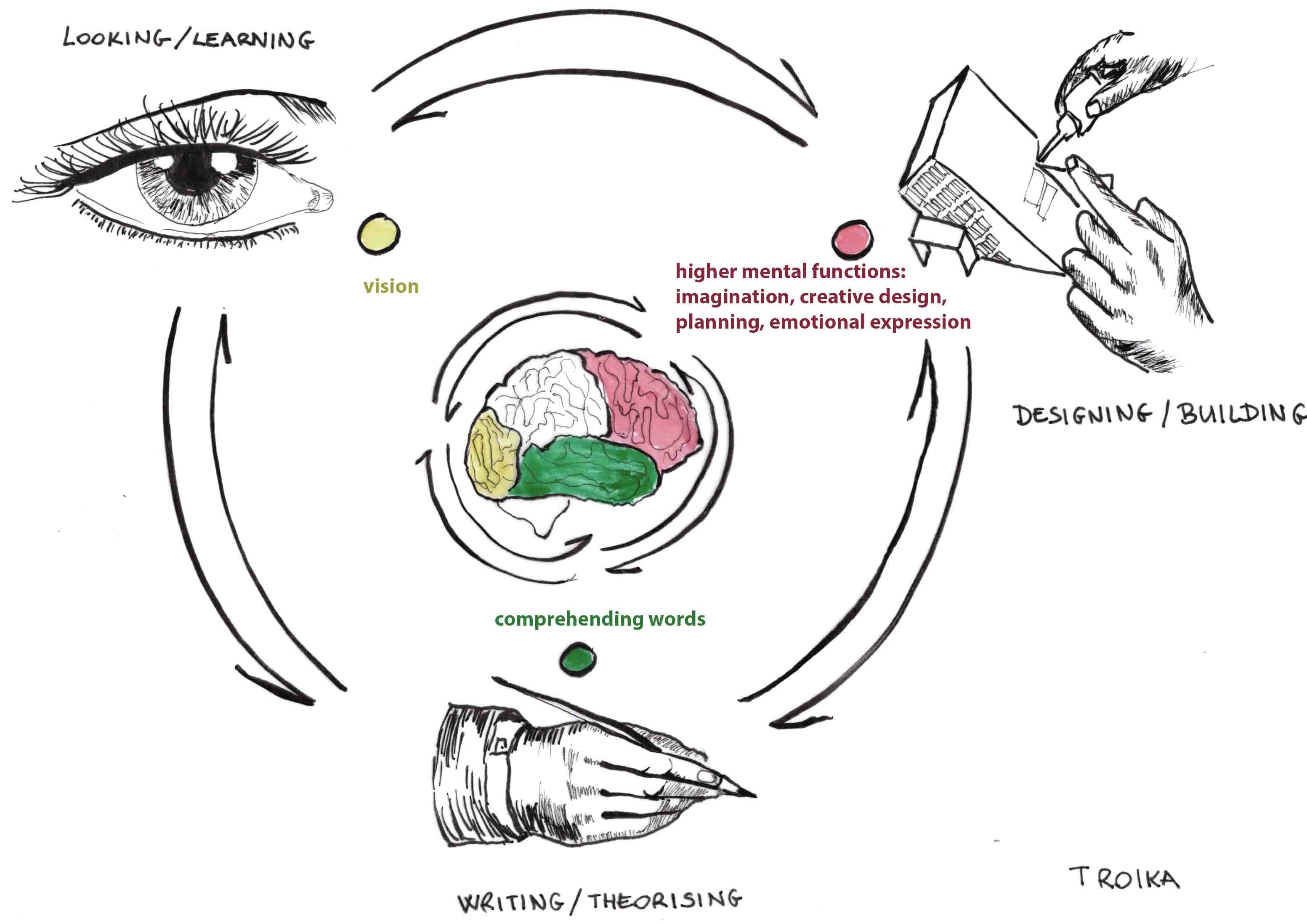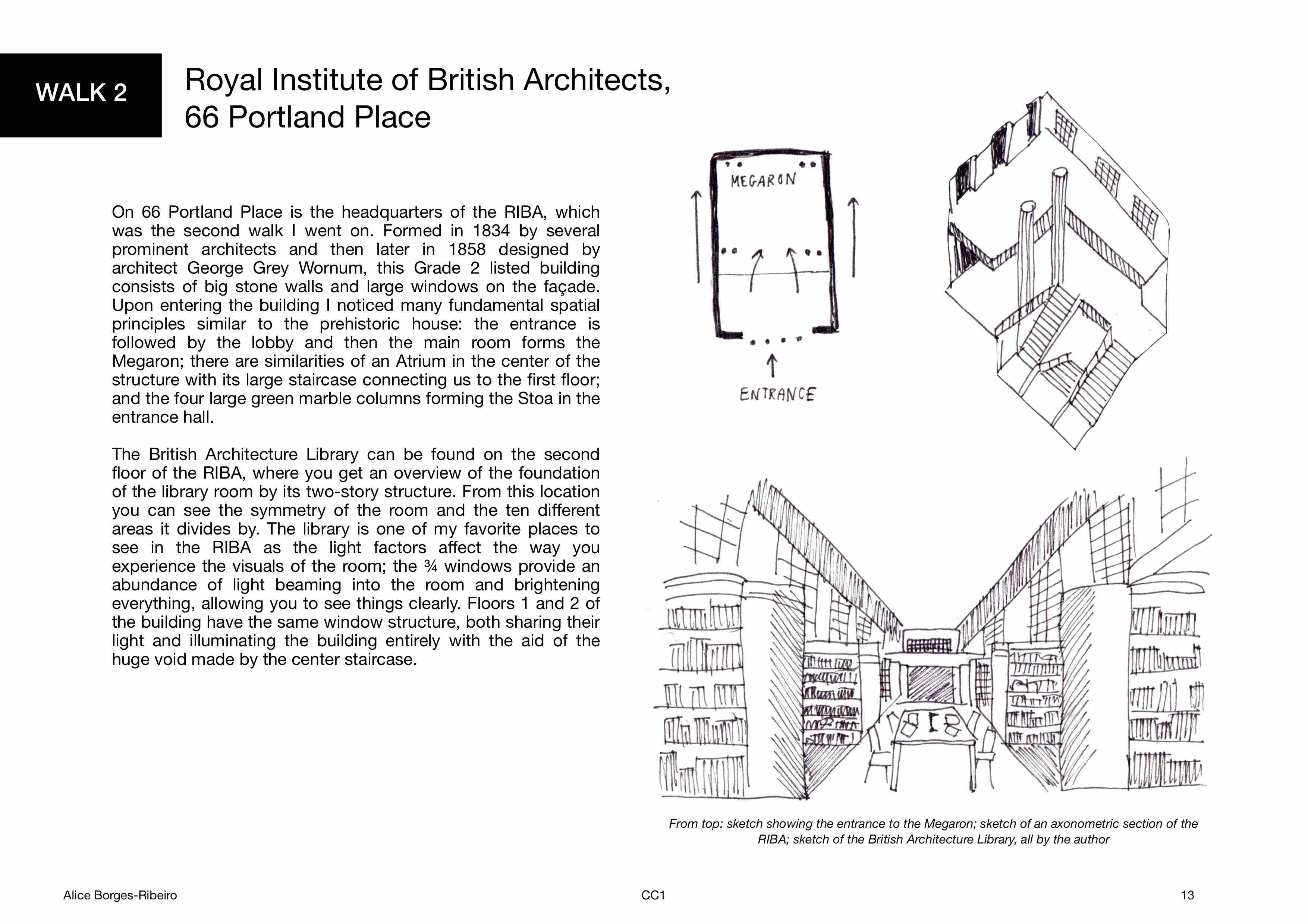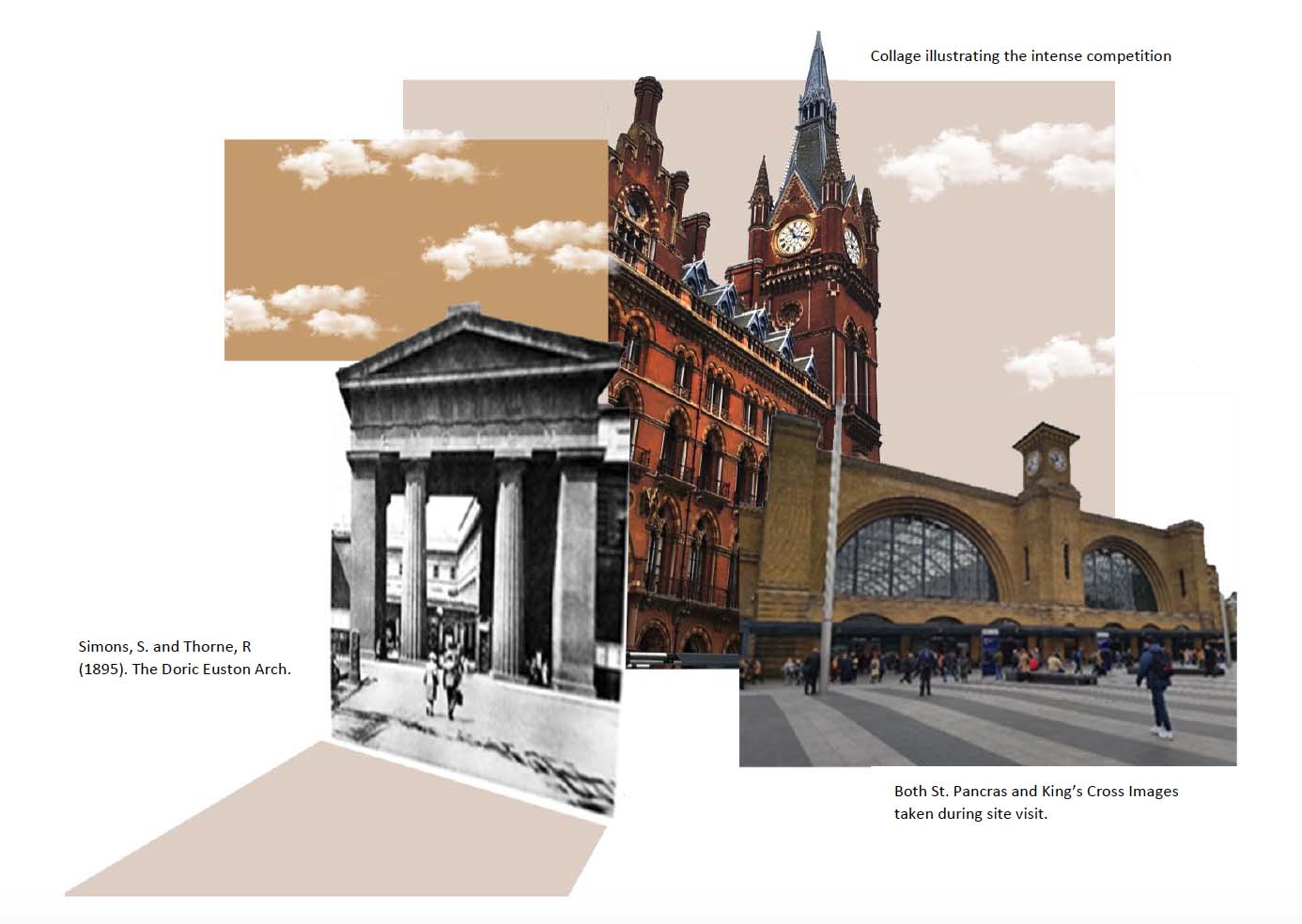BA Cultural Context ARCHIVE
Module Leaders: Sarah Milne, Kate Jordan, Ben Stringer
Sarah Milne (module leader CC1) studied and practised architecture before completing a PhD in architectural history. Alongside her role as Lecturer at the University of Westminster, she is a Research Associate at the Survey of London (Bartlett, UCL).
Kate Jordan (module leader CC2) is an architectural historian with research interests in gender, heritage and faith architecture.
Ben Stringer (module leader CC3) has taught and written about design and cultural context for many years. His recent publications focus on representations of the rural within architectural culture.
In practice, architects need to be excellent designers, but they also need to be able to research, understand and communicate ideas about the way design relates to the broader interests of the cultural context in which they practice. The Cultural Context course is where Westminster students are equipped with the skills to do this. In particular they learn how to articulate ideas about architecture through the production of written texts. The Undergraduate Cultural Context course is taken by all students studying on the degrees in architecture and cognate disciplines. It is structured as a set of three modules, CC1, CC2 & CC3 that students study respectively in the first, second and third years of their degree. The modules are designed to make sense as a set, where CC1 is foundational for CC2 and, similarly, CC2 builds the foundations for CC3.
CC1 – A History of Architecture
Organised into small groups, students begin the module by exploring and recording key buildings in London. Later they choose to research and observe one London building in particular. The lecture series runs throughout the year and introduces elementary spatial themes and ideas which can be traced from 700 BC to the present day. Also running throughout the year, interactive workshops are centred around short pieces of writing about architecture and provide students with the opportunity to develop critical reading and writing skills fundamental to this and subsequent Cultural Context modules.
CC2 – Architectural History & Urbanism
The course begins as a series of lectures for the entire cohort covering a rich and diverse range of topics. The students work in groups to produce workbooks that comprise a review of the lecture series and independent research on the themes that they have been introduced to. In the second semester, the students are taught in small groups by individual tutors who devise a series of seminars around their own research expertise. The students produce two pieces of coursework in this semester: an essay and a statement which describes the learning trajectory throughout the module.
CC3 – Dissertation
In their final year, BA Architecture and BA Interior Architecture students research and write about any architecture or interiors related subject that they choose and that they argue is of significance. Students are supported through this process by a diverse group of academics through seminars, presentations and weekly tutorials. It is an important opportunity for students to begin shaping the particular direction of their future academic and professional careers.
Architectural History & Urbanism
Tutors: Nick Beech, Eva Branscome, François Girardan, Kate Jordan, Maja Jovic, Benson Lau, Constance Lau, Gwyn Lloyd Jones, Shahed Saleem, Rachel Stevenson, Ben Stringer, Julian Williams, John Zhang
Cultural Context Extended Essay
Tutors: Nick Beech, Eva Branscome, François Girardin, Gwyn Jones, Kate Jordan, Maja Jovic, Constance Lau, Will McLean, Sarah Milne, Mike Rose, Shahed Saleem, Rachel Stevenson, Ben Stringer, John Zhang
2018/19 was another good year for third year dissertations, with a very varied array of subjects investigated and high numbers of students achieving distinction level grades.
Among the many notable subjects investigated this year are: Gabia Gliaudelyte’s study of Soviet housing estates in Vilnius; Mariam Houta’s examination of ‘Egyptianised’ modernism in Cairo; Maheer Khan’s analysis of Mosques in China; Ashpreet Khurll’s work on iconicity in Baku; Zsuzsanna Szohr’s research on the evolution of standard house types in Hungary; and Maria Zlatareva’s critical appraisal of historic preservation and regeneration in the Northern Village, Seoul.
In spite of the variety, one can discern some ongoing trends: social housing and gentrification continues to attract (much needed) attention, as do case studies of particular issues of urban politics and sociology in cities around the world, which reflects the very international character of our student body. This year a significant number of students also took on issues of cultural heritage and the complexities of preservation and regeneration in contested contexts, subjects that most often require learning from a range of other academic disciplines.
Dissertation
Tutors: Richard Difford, Nick Beech, Harry Charrington, Davide Deriu, Kate Jordan, Alan Powers, Ro Spankie, Rachel Stevenson, Ben Stringer
Developed in the context of their first year MArch History & Theory seminar group, students choose their own subject to explore in the Dissertation. They are guided by tutors with a diverse range of interests and methods but a common commitment to advancing the individual specialisms and scholarship of each student. A breadth of topics and a plurality of approaches are encouraged with the ambition that the work produced will be distinguished by its high quality, not its adherence to any particular methodology, dogma or style.
Mosopefoluwa Bob-Soile: Revisiting Agricola Cornelia: Art Farms & Social Practice
Reflecting on Gianfranco Baruchello’s farm Agricola Cornelia (1973-81), this dissertation looks at the notion of agricultural-based art projects in rural spaces. It enquires how such projects reconsider the relationship between land and landscape in the countryside. Arguing that Agricola Cornelia anticipates contemporary social practice in the arts, the potential of Baruchello’s visceral engagement to address the complexity of rurality is discussed. It suggests that this farm has engaged with different ways of seeing the countryside in its socio-political context beyond agriculture and the natural environment.
Megan Carmichael: Voices of Vice and Virtue in the Boundary Street Estate
In light of today’s housing crisis, this dissertation reflects back on the comparable crisis faced by Victorian London during the nineteenth century. To gain a further understanding of the issues we face today, it retraces the steps that lead to the development of England’s first council housing residence, ‘The Boundary Street Estate’ (1900). Considered a grand social experiment, this estate was the product of the momentous social changes that occurred throughout the nineteenth century. By revisiting primary sources, the author plays the role of architectural detective investigating the story behind the scheme, uncovering its secrets and speculating on its agendas.
Fiona Grieve: The Reception of Refugees in the UK
The Reception of Refugees in the UK explores the journey of a refugee through the British asylum system with a focus on the provision of accommodation within it. This dissertation examines the political process, the influence of architecture and planning and subsequent perceptions and attitudes towards refugees living in detention centres and asylum accommodation. The research also explores the efforts of non-state organisations to integrate refugees into society and understand how or if the process of reception prepares refugees for a life in the UK.
Denisa Groza: Across-Ground: A Spatial and Symbolic Interpretation of Transhumance in the Carpathian Mountains
Transhumance represents a key part of the historic narrative of the Carpathian Mountains. Within the Romanian landscape, the seasonal movement of livestock in the search for agro-pastoral resources has created a complex system of routes connecting winter and summer pastures from different regions. This dissertation engages in a critical study of transhumance within the Romanian landscape, reinterpreting its manifestations using theories relating to space, symbolism and mobility. This provides a means by which to reframe the definition of this practice; and to provide an enhanced perspective on its economic, social and cultural importance in the present context.
Charlotte Penny: The Red House and the Contest Between the Theoretical and Practical Nature of Conservation
Many factors are involved in the conservation of historic buildings and architects often have to balance a wide range of constraints, whilst also at the same time acting as a faithful custodian of the United Kingdom’s shared heritage. Using the Red House as a case study, this dissertation aims to evaluate changing attitudes towards the theoretical and practical nature of conservation. It also endeavours to ascertain the principal factors that have shaped the way the National Trust has chosen to preserve and restore the historic fabric of this building. The influence of key players, such as developers and councils, are also analysed and an appraisal is made of the methods employed by the National Trust.
Eline Putne: Advertising’s Image of Women in Architecture
In this study, a selection of advertisements from the Architects’ Journal and the Architectural Review is used as primary evidence to demonstrate how the building industry and the media have marginalised women in architecture, and perpetuated the patriarchal characterisation of the architectural profession. Positioned in the broader history of the architectural profession in the UK, this analysis reveals the extent to which the architectural media has influenced social attitudes towards women and contributed to some of the challenges that women pursuing a career in architecture face today.
Lewis Toghill: Crafting Reality: Virtuality in Art and Performance
Our lives increasingly play out in virtual environments. These environments primarily, and often necessarily, occupy the visual realm, and the extent to which they have become entangled in our everyday reality has led to changing relationships between the digital condition and the previously distinct material world. Virtual materialities, accompanied by the necessary cognisance of their possible applications, are radically changing how spaces and objects are conceived and experienced. This dissertation takes the position that, rather than opposing our everyday material reality, virtual objects and environments represent their own kind of material reality.












